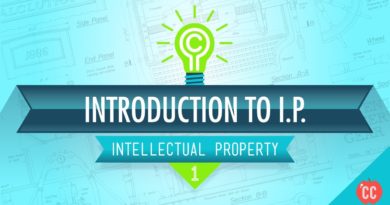Moving Toward a Design Patent Bar – Progress in the IP Community
“Perhaps the recent movement and call for a change to the patent bar requirement, as applied to design patents, is [one] tangible, executable action item that will make the intellectual property community more diverse, inclusive and equitable.”
Challenging established processes is a commonly recognized leadership principle. In recent weeks, the emphasis by the United States Patent and Trademark Office (USPTO) on reconsidering and reforming patent bar eligibility, especially with regard to a potential design patent bar, represents a significant challenge to well-established Patent Office procedures. If the health and viability of an organization can be defined in terms of its ability to revisit, revamp and evolve existing rules and procedures, then this initiative, led by Under Secretary of Commerce for Intellectual Property and Director of the USPTO Kathi Vidal, represents a healthy and viable intellectual property community.
Qualifying for and Passing the Patent Bar
Under the current version of the USPTO rules, a technical background is required to qualify for the patent bar examination. As defined by the USPTO, an “applicant applying for the examination must demonstrate to the Director of the Office of Enrollment and Discipline (OED) that he or she possesses the scientific and technical training necessary to provide valuable service to patent applicants.” According to the USPTO, “[t]he requirement for lab-based core science courses is meant to ensure familiarity with the processes involved in conducting valid experiments, the scientific method, and proper analysis of scientific data.” This serves the over-arching goal of the requirements which are intended “to ensure fairness in the application process while also ensuring that patent practitioners who represent inventors are qualified, understand the technology, and are able to communicate effectively with inventors regarding the technical features of the invention.”
The patent bar examination specifically covers the laws, rules, and procedures dictated by the Manual of Patent Examining Procedure (MPEP). In previous iterations, the patent bar examination includes a multiple-choice section for testing an applicant’s knowledge of the MPEP and a hand-graded written portion for testing his or her ability to draft claims. As currently implemented by the USPTO, the patent bar examination has eliminated the written portion and is now broken into two sessions covering 50 multiple-choice questions. The questions on the patent bar examination apply to all technology backgrounds and do not expressly test for detailed technical knowledge (although the questions may include some technical descriptions). Accordingly, the technical qualification portion most likely relates to the practice of patent law after passing the patent bar examination rather than being able to successfully complete and pass the patent bar examination.
The Current Rules Create an Unnecessary Barrier
Currently, a patent bar registration entitles an attorney or agent to file and prosecute utility or design patents before the USPTO. Although there are a limited number of technical degrees or coursework that enable a person to be eligible to sit for the patent bar examination, the grant of the patent bar registration does not limit the person to practice only in the field in which they are technically qualified. Just as there is no distinction between the technical areas in which a registered patent lawyer may practice, there is no distinction between their ability to file utility patents and design patents. Given that design patent protects an ornamental design for a useful article of manufacture, it is not likely that an underlying technical degree or coursework is a prerequisite for strategic execution of an intellectual property strategy including design patent filings and prosecution. This lack of nexus between a technical degree or coursework does not impact the existing community of registered patent attorneys and patent agents. It does, however, deprive the intellectual property community of additional members, and it deprives individuals without the required technical degree program or coursework from expanding their practice to include filing non-technical design patents. The general consensus is that these missing additional members represent a disproportionate number of people from underrepresented affinity groups, including women and minorities.
At a high level, the USPTO is considering proposals that would eliminate the technical background requirement for individuals to be able to file and prosecute design patents before the USPTO. Specifically, according to Director Vidal, such proposals under consideration are aimed at ensuring that “everybody has an opportunity to participate in the innovation ecosystem to make sure that we’re not creating unnecessary barriers to practice before the USPTO.” In that regard, the USPTO rules and regulations for the preparation and prosecution of design patents are covered under Chapter 21 of the MPEP. Additional rules and regulations set forth in other chapters of the MPEP are also applicable to design patents. Accordingly, while it would seem that a general knowledge of the MPEP may still remain a minimal qualification for a practitioner, such knowledge is typically learned through independent study or coursework, often well after an attorney or agent-in-training has begun work in a legal organization. There is nothing to suggest that the minimal qualification of demonstrating knowledge of USPTO rules and regulations could not be achieved by individuals who do not have a technical degree.
Time for Action
For many years, government agencies, corporations, law firms and individual citizens have been working toward commitments and pledges to increase diversity, inclusion and equity in the workplace. Execution of such commitments and pledges have been historically difficult to achieve. In recent months, there appears to be a heightened demand for tangible, executable action items that accompany commitments and pledges. Perhaps the recent movement and call for a change to the patent bar requirement, as applied to design patents, is in line with such tangible, executable action items that will make the intellectual property community more diverse, inclusive and equitable. If so, with the full support of intellectual property stakeholders, we can make it happen.
Image Source: Deposit Photos
Image ID: 7244323
Author: Alexmit
Mauricio Uribe
Mauricio Uribe is a Partner with Knobbe Martens. He has extensive experience in comprehensive client counseling in all aspects of intellectual property law. He has counseled various clients on patent […see more]







